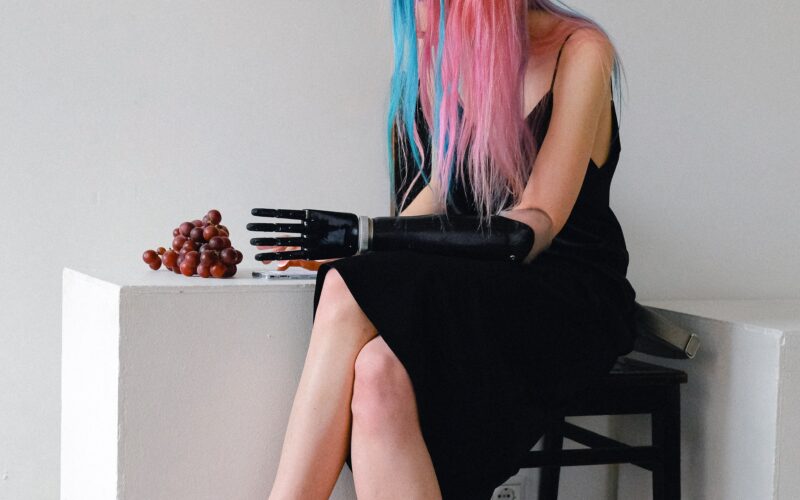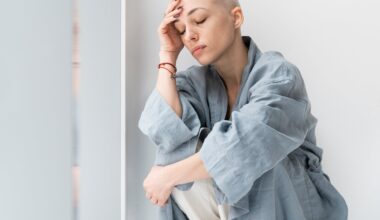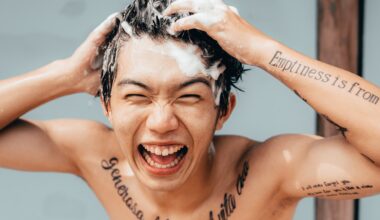Introduction
Coloring black hair can be a transformative journey, a canvas waiting to be adorned with vibrant hues or subtle highlights. Whether you’re looking to express your style, cover grays, or simply infuse some novelty into your look, mastering the art of hair coloring is essential. In this guide, we delve into the world of coloring black hair, equipping you with invaluable tips and techniques to make the process a resounding success.
The Art of Coloring Black Hair
Why Coloring Black Hair Differs:
Coloring black hair isn’t a one-size-fits-all endeavor. Its unique characteristics demand special consideration. Unlike lighter hair colors, black hair often contains warm undertones. Understanding these undertones is crucial for achieving the desired result. Warm undertones can sometimes clash with certain shades, leading to unexpected color outcomes.
Significance of Hair Undertones:
Hair undertones play a significant role in the coloring process. Determined by genetics, these undertones can range from warm red or copper to cooler blue or ash undertones. Identifying your hair’s undertones guides you in selecting the most suitable hair color. Warm undertones complement warm shades like golden browns and caramels, while cooler undertones pair well with shades like cool brown or ash.
Preparing Your Hair and Skin
Assessing Hair Health:
Before embarking on the coloring journey, it’s essential to evaluate the health of your hair. Healthy hair absorbs and retains color more effectively. Ensure your hair is well-hydrated, free from excessive damage or split ends. Consider trimming your hair if necessary, as this will promote even color distribution.
Skin Protection:
Hair dye can be notorious for staining the skin, especially around the hairline and on the forehead. To prevent this, apply a thin layer of petroleum jelly or a barrier cream along your hairline and ears. Use disposable gloves to protect your hands during the application process. In case of any accidental stains, have a stain remover or gentle cleansing solution ready.
Choosing the Right Shade
Factors to Consider:
Selecting the perfect hair color is a pivotal decision in your hair coloring journey. Several factors come into play:
- Undertones: As mentioned earlier, understanding your hair’s undertones is crucial. Determine whether your hair has warm or cool undertones.
- Personal Style: Consider your personal style and the image you wish to project. Are you looking for a natural, subtle change, or are you seeking a bold, dramatic transformation?
- Skin Tone: Take your skin tone into account. Certain hair colors complement different skin tones better. Warm tones in hair can enhance warm skin tones, while cooler shades can complement cooler skin tones.
Influence of Undertones:
The undertones in your hair should guide your choice of hair color. If you have warm undertones, opt for shades like golden brown, honey blonde, or auburn. For cooler undertones, ash brown or cool black may be more suitable. Remember, it’s about creating a harmonious, flattering look.
DIY vs. Salon Coloring
Pros and Cons of At-Home Hair Coloring:
Pros:
- Cost-Effective: DIY hair coloring is often more budget-friendly than salon services.
- Convenience: You have the flexibility to color your hair on your schedule.
- Privacy: Some prefer the privacy of their home when experimenting with new looks.
Cons:
- Limited Expertise: DIY coloring may lack the precision and expertise of a professional colorist.
- Risk of Mistakes: Errors in color choice or application can result in undesirable outcomes.
- Maintenance: DIY coloring can require more frequent touch-ups, as the results may not be as long-lasting as salon coloring.
When to Seek Professional Assistance:
- Complex Coloring: If you’re aiming for a complex coloring job, such as highlights, balayage, or intricate color patterns, it’s best left to a professional.
- Major Color Changes: If you’re making a significant shift in hair color, especially from dark to light or vice versa, a colorist can ensure a more even and controlled outcome.
- Desired Precision: When you require precise color placement or blending, professionals have the tools and expertise to achieve the desired effect.
Essential Tools and Products
Key Tools:
When coloring your hair, having the right tools is essential for a successful outcome. Here’s what you’ll need:
- Applicator Brush: A brush with fine bristles for precise color application.
- Mixing Bowl: A non-metallic bowl for mixing hair dye and developer.
- Sectioning Clips: To divide your hair into manageable sections for even coverage.
- Gloves: Disposable gloves to protect your hands from staining.
Essential Products:
In addition to the tools, you’ll require the following products:
- Hair Dye: Choose a high-quality hair dye in your desired shade.
- Developer: This activates the hair dye and determines the final color result.
- Barrier Cream or Petroleum Jelly: To protect your skin from dye stains.
- Stain Remover: A gentle stain remover or cleansing solution for any accidental skin stains.
Where to Source Products:
You can find hair dye kits at local drugstores, beauty supply stores, or online. It’s advisable to opt for reputable brands known for their quality and variety of shades.
The Coloring Process
Step-by-Step Guide to Coloring Black Hair:
- Patch Test: Before applying the hair dye, conduct a patch test to check for any allergic reactions. Follow the instructions provided with your hair dye kit.
- Prepare the Area: Lay out all your tools and products, and protect the surrounding area with newspapers or old towels to prevent staining.
- Mix the Dye: Follow the instructions on the hair dye kit to mix the dye and developer in the provided mixing bowl. Ensure thorough and even mixing.
- Section Your Hair: Use sectioning clips to divide your hair into manageable sections. Start with clean, dry hair.
- Apply the Dye: Using the applicator brush, apply the dye evenly to each section, starting from the roots and working your way down to the tips. Make sure to saturate the hair completely.
- Processing Time: Follow the recommended processing time specified in the instructions. This can vary depending on the brand and type of hair dye used.
- Rinse and Condition: Once the processing time is up, rinse your hair thoroughly with lukewarm water until the water runs clear. Apply the provided conditioner or a deep conditioner to nourish your hair.
- Final Rinse: Finish with a final rinse, and then gently pat your hair dry with a towel. Avoid vigorous rubbing, as freshly colored hair is more susceptible to damage.
- Styling: Style your hair as desired, but avoid using heat styling tools immediately after coloring to minimize damage.
- Maintenance: To prolong the vibrancy of your color, use color-safe shampoo and conditioner, and protect your hair from excessive sun exposure and chlorine.
Maintaining Colored Black Hair
Post-Coloring Care Tips:
- Color-Safe Products: Use shampoos and conditioners specifically designed for color-treated hair. These products are formulated to protect the color and prevent it from fading.
- Deep Conditioning: Regularly indulge your hair with deep conditioning treatments. This helps maintain moisture balance and keeps your hair looking vibrant.
- Heat Protection: If you frequently use heat styling tools, apply a heat protectant before styling. High heat can cause color fading and damage.
- Regular Touch-Ups: Depending on the rate of hair growth and the contrast between your natural color and the dyed shade, you may need periodic touch-ups to maintain an even color.
- Sun Protection: UV rays can lead to color fading. Consider wearing a hat or using UV protectant sprays when spending extended periods in the sun.
- Avoiding Harsh Chemicals: Be cautious with hair products that contain harsh chemicals like sulfates and alcohol. These can strip the color and lead to dryness.
- Water Temperature: When washing your hair, use lukewarm water rather than hot water, as hot water can strip the color and dry out your hair.
- Professional Maintenance: Regular visits to a professional colorist can ensure your color remains even and vibrant over time.
Conclusion
Coloring black hair is an art that empowers you to express your style, rejuvenate your look, or simply embrace a new chapter in your hair journey. By following the tips and techniques outlined in this guide, you’re equipped to embark on this transformation with confidence and success.
Remember that the choice between DIY and salon coloring depends on your preferences and the complexity of your desired look. Both paths have their merits, and with the right knowledge, you can make an informed decision.
As you explore the world of hair color, stay mindful of proper maintenance to preserve your color’s vibrancy and your hair’s health. With the right care, your colored black hair can continue to dazzle and inspire.
Whether you’re opting for a subtle change or a dramatic transformation, may your hair journey be filled with self-expression, creativity, and the joy of discovering the beauty that lies within you.






